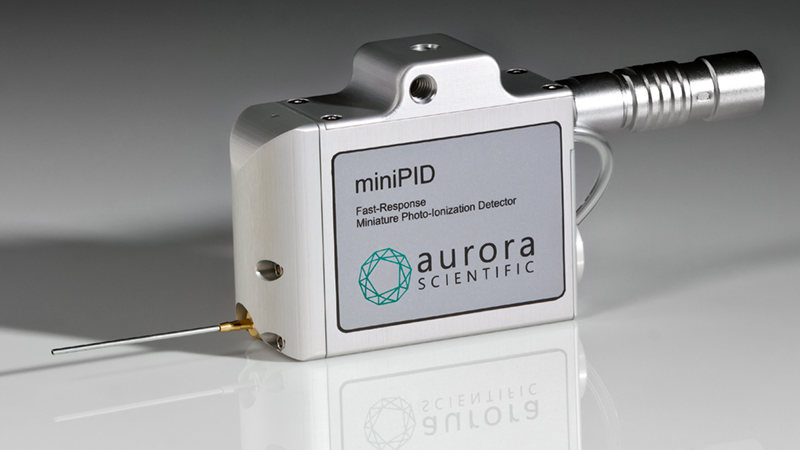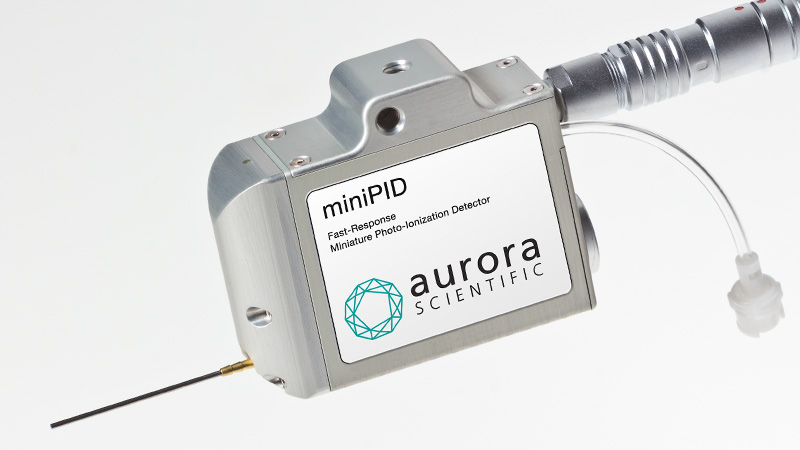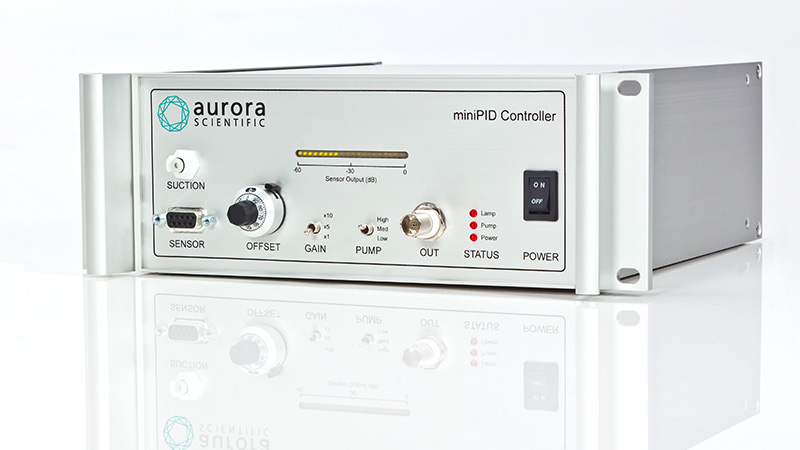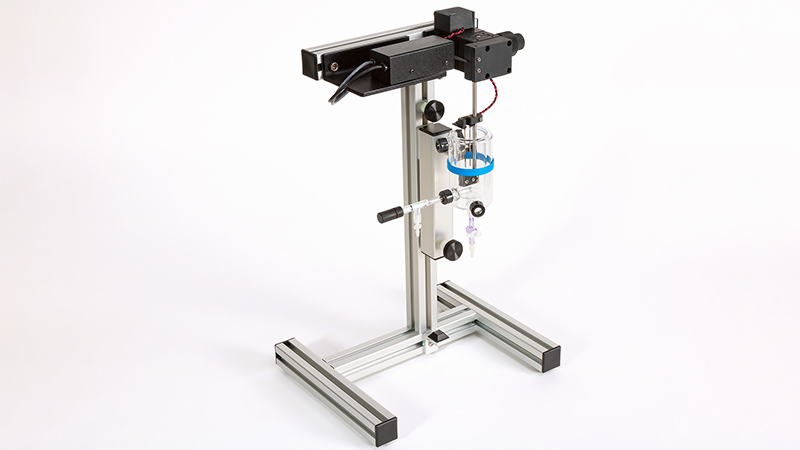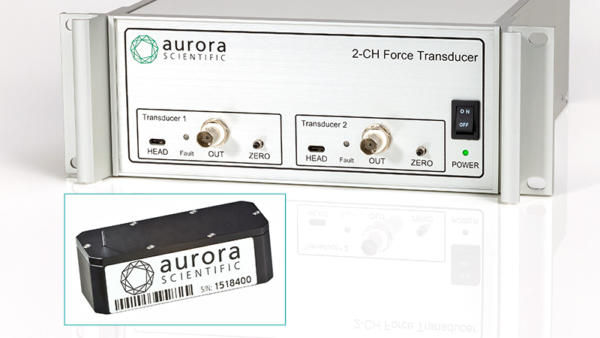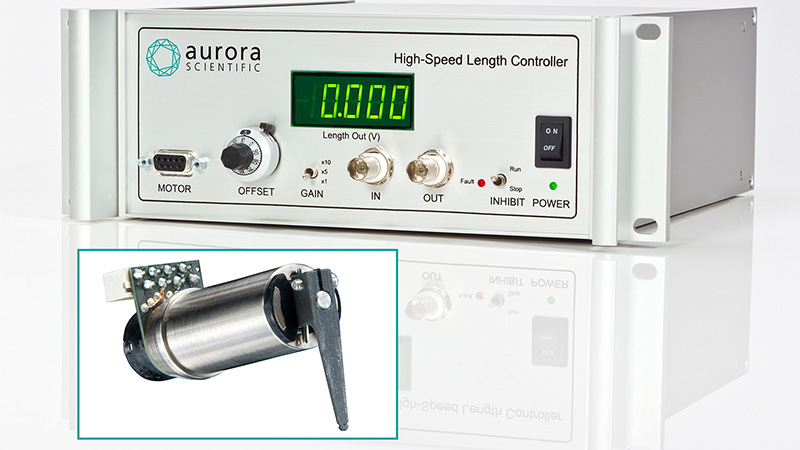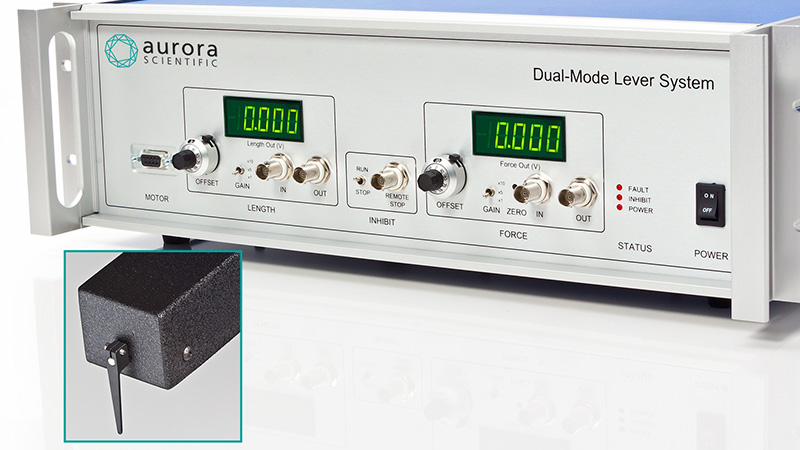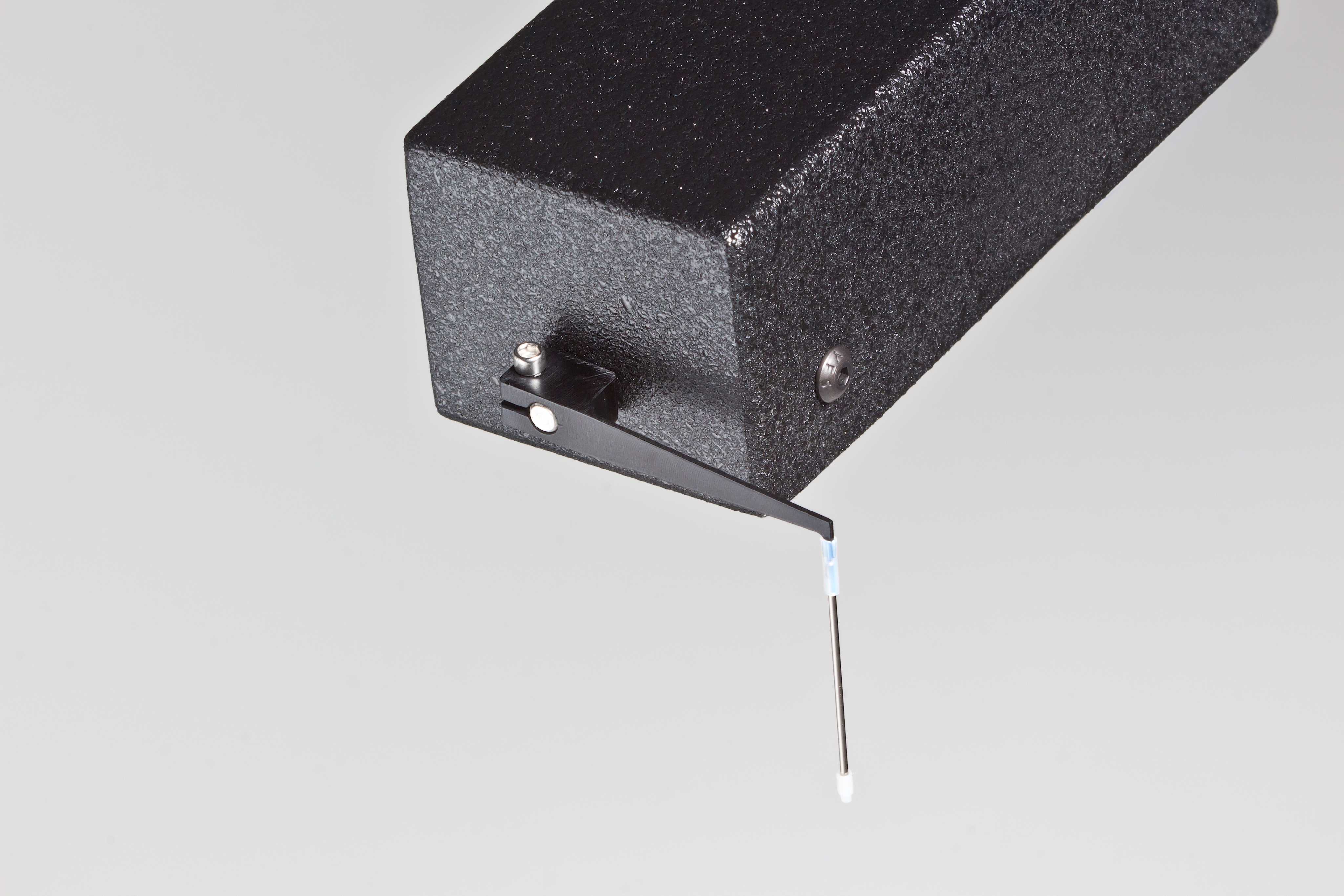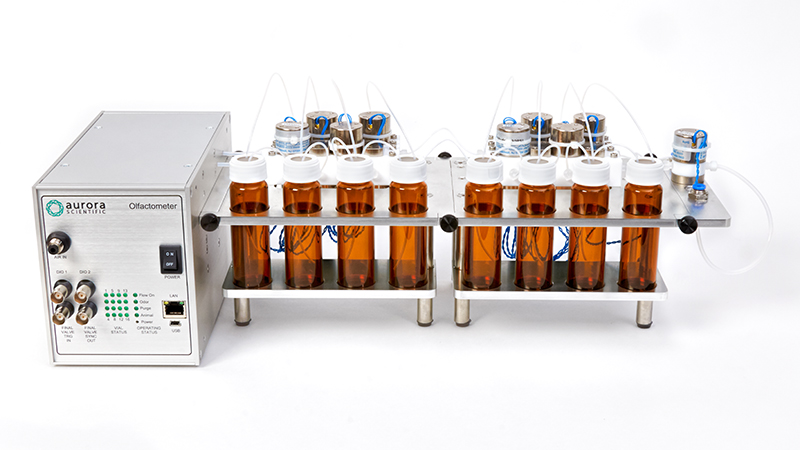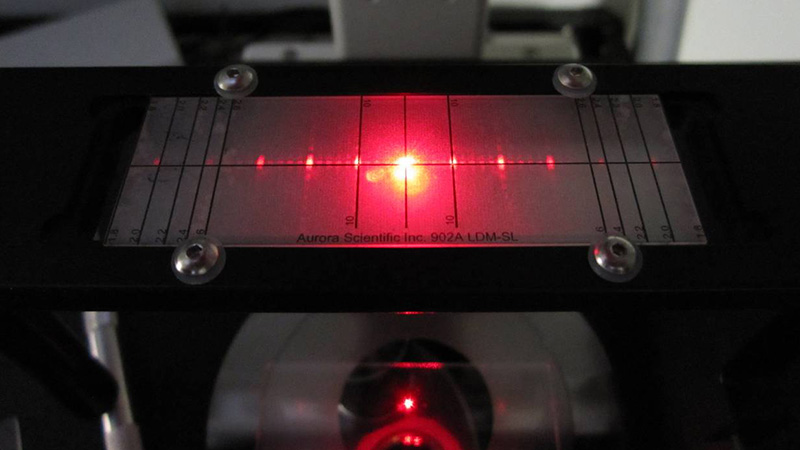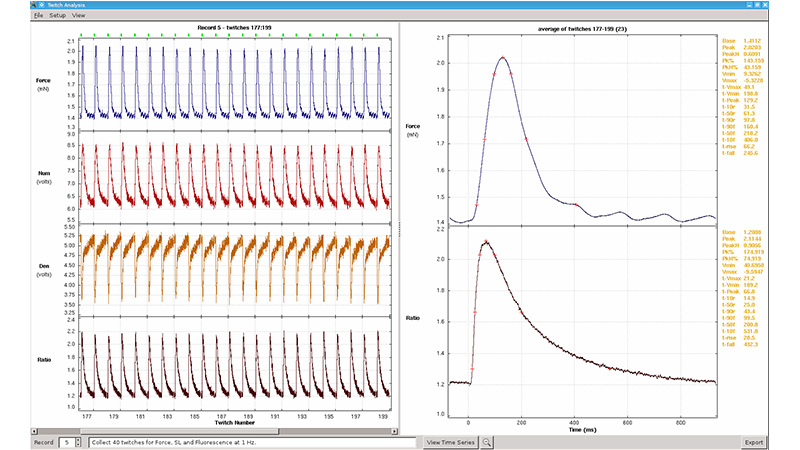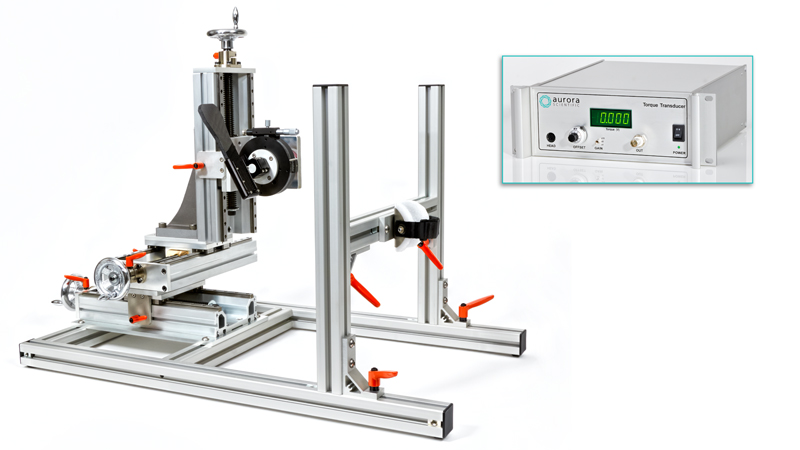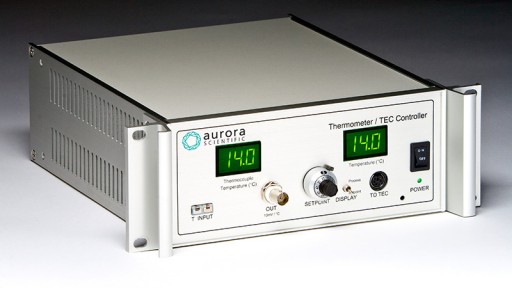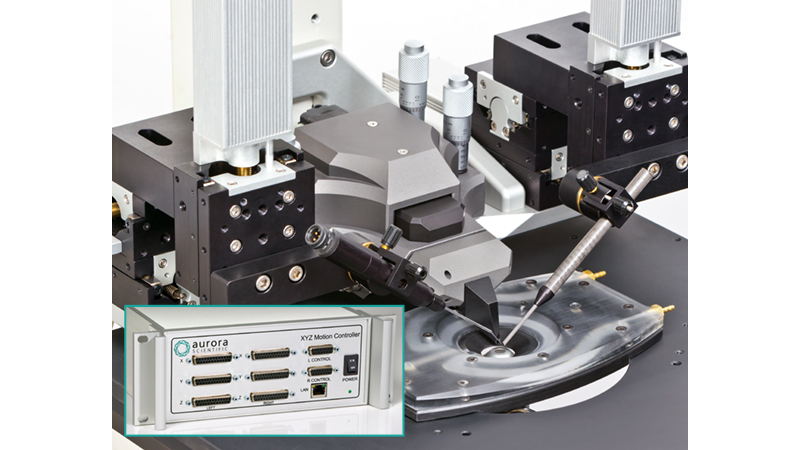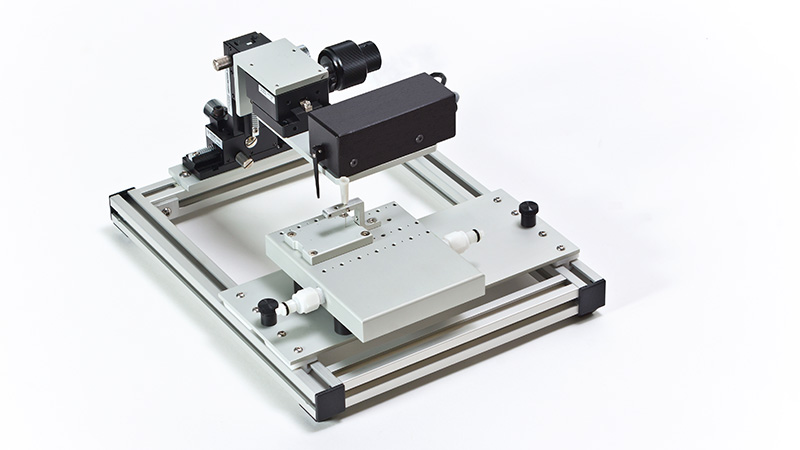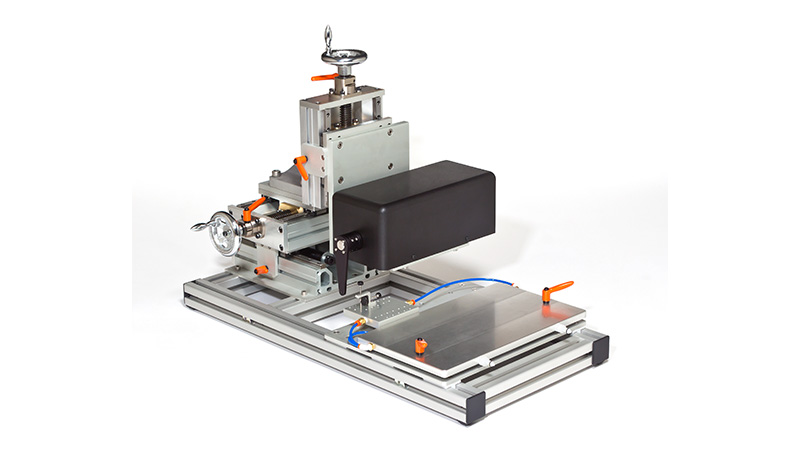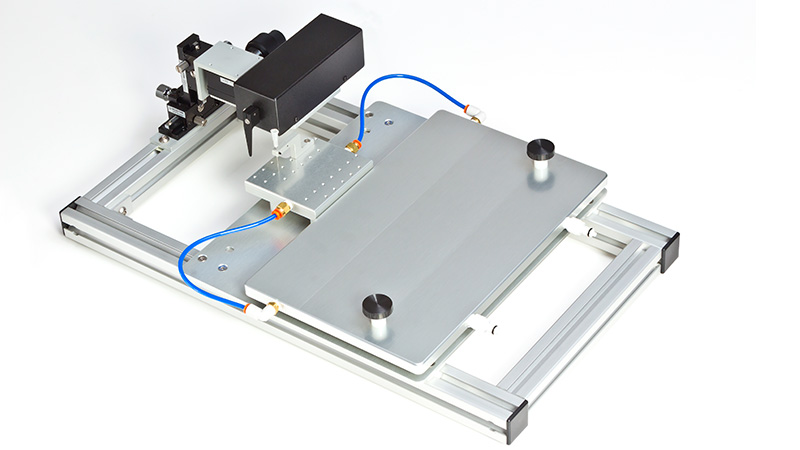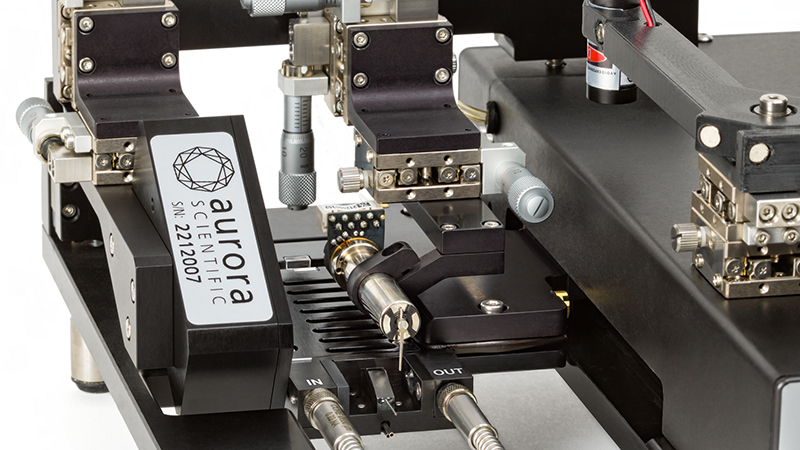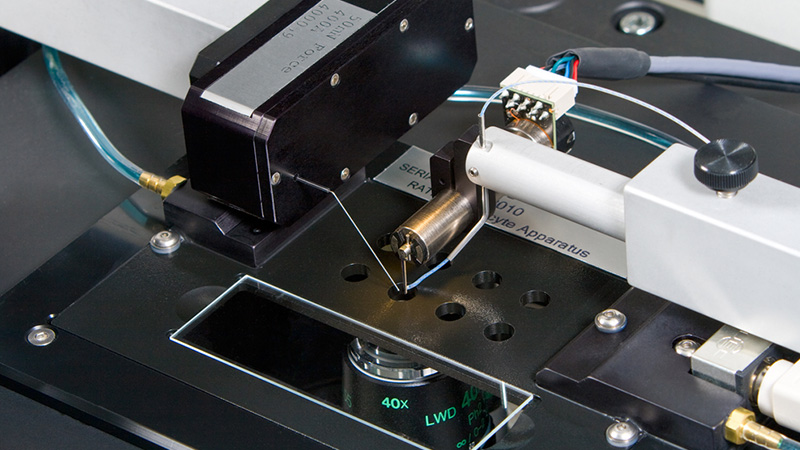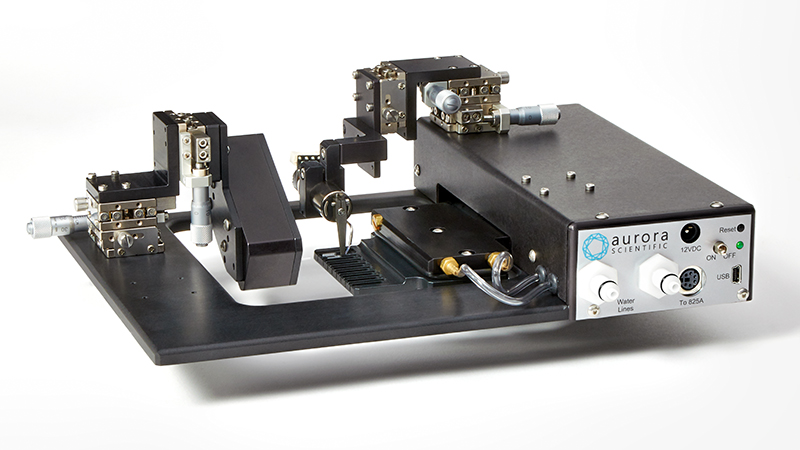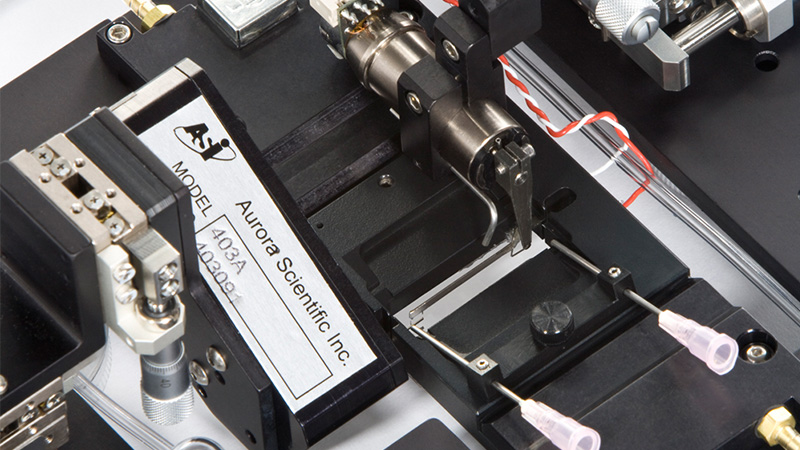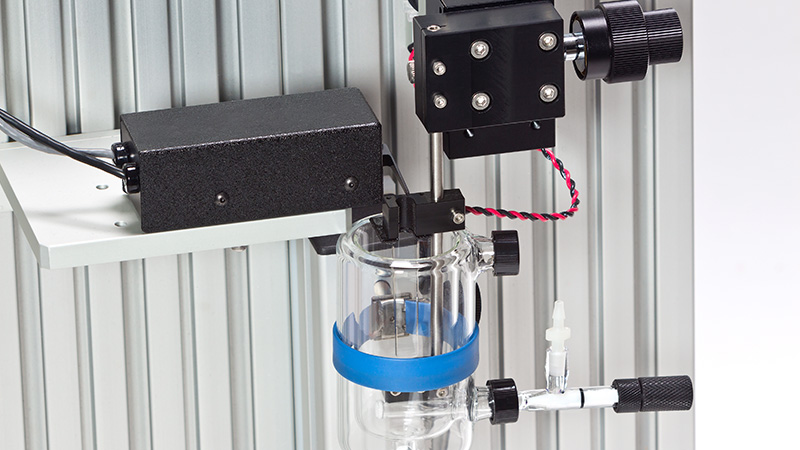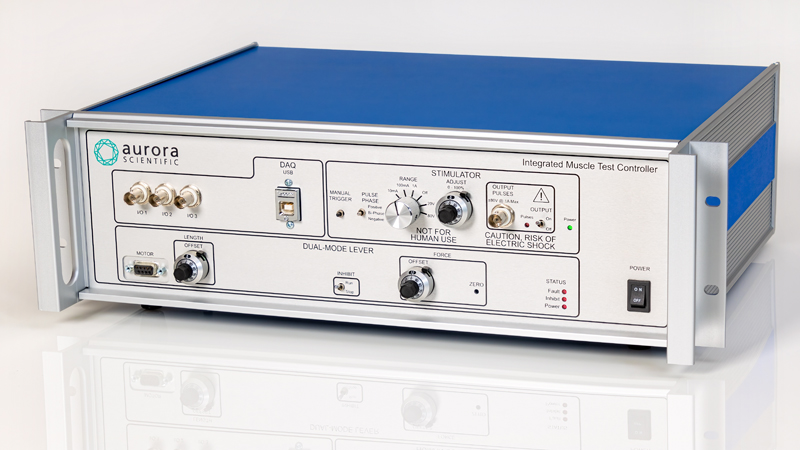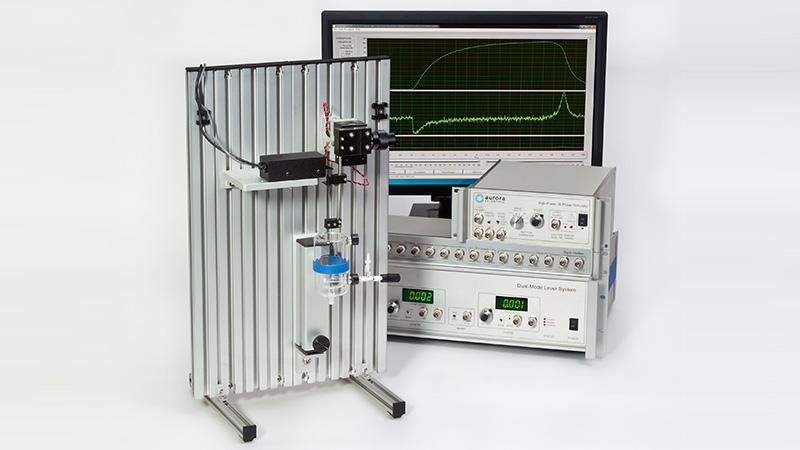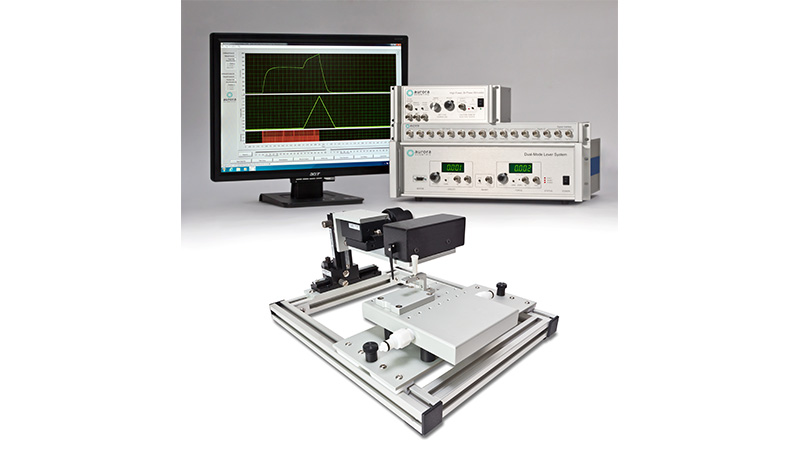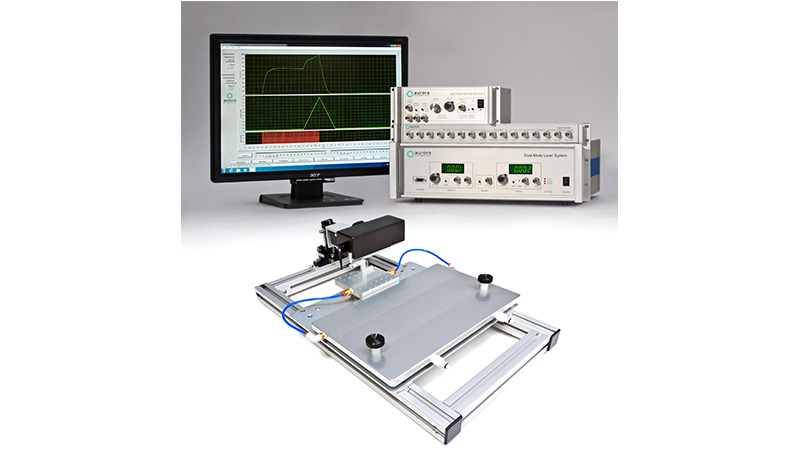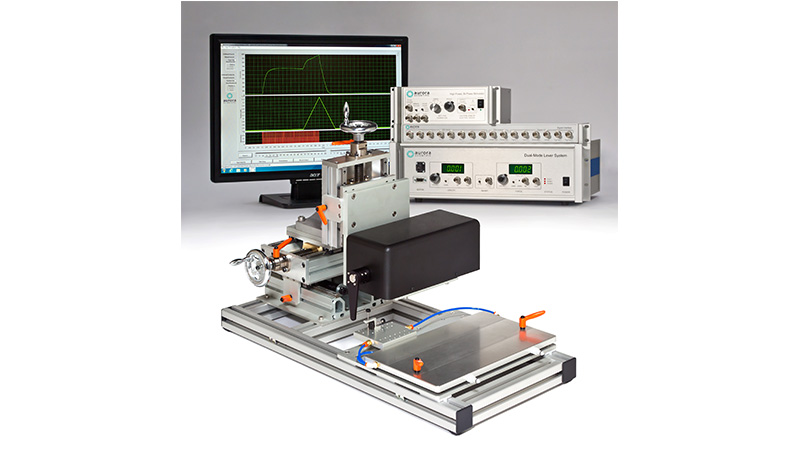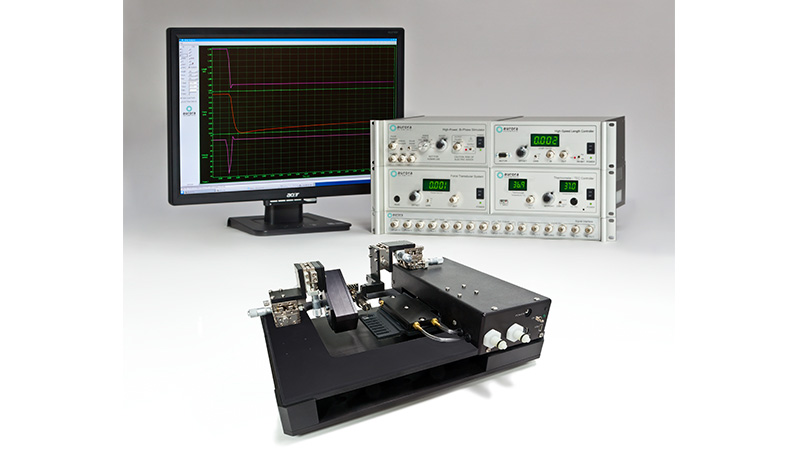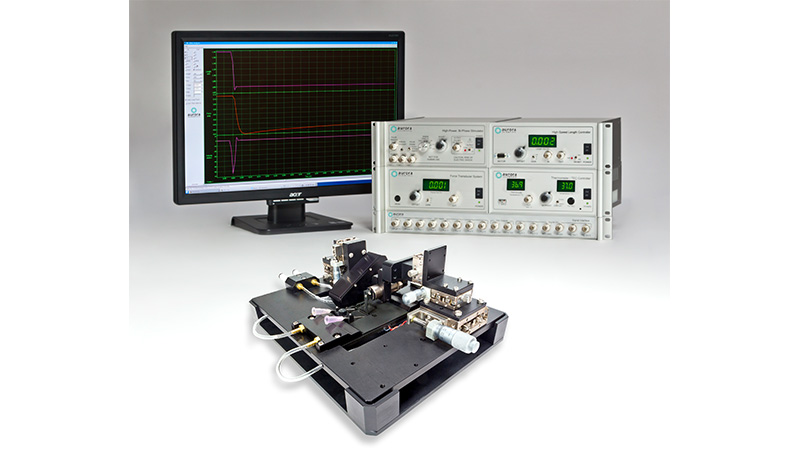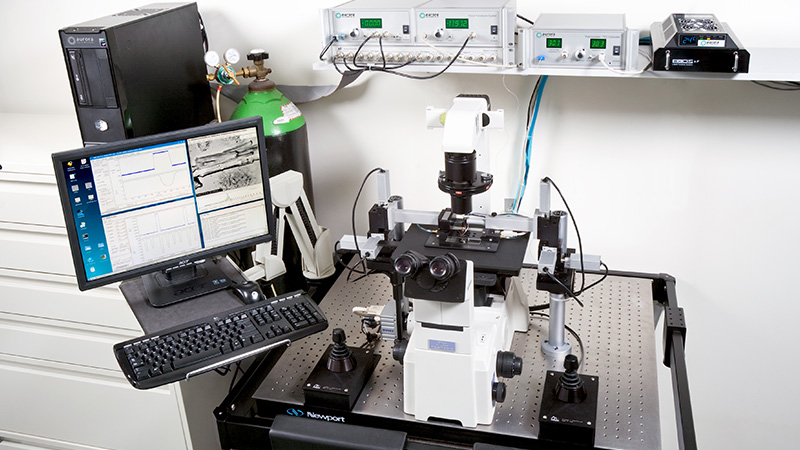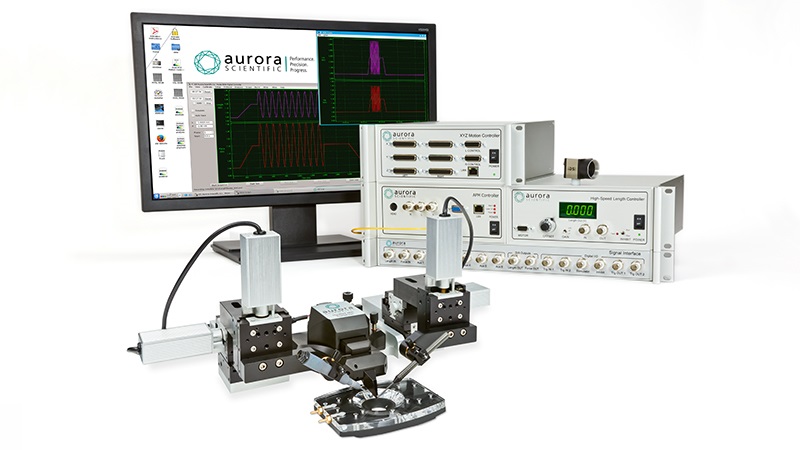200B:miniPID快速反应嗅觉传感器
200B miniPID光离子化检测器将小尺寸、快速响应和高灵敏度结合在一个易于使用、价格有竞争力的包装中。该传感器为嗅觉实验而设计,其真实频率响应为330 Hz,上升时间为0.6毫秒。检测极限是空气中100 ppb(十亿分之一)的丙烯,全量程测量范围是500 ppm。
miniPID已被成功用于涉及小鼠、大鼠、果蝇、飞蛾、蚊子和蚂蚁的大量嗅觉研究。研究人员和制造商也一直在使用miniPID来描述嗅觉仪的特性。
传感器头包含检测单元、电子测量仪、射频激发的紫外灯和灯控制电路。易于使用的控制器有用于仪器电源、泵速和增益的开关,以及一个用于设置零点的控制器。LED灯提供电源、泵和灯的状态指示。前面板上的显示屏提供传感器输出信号的快速反应指示。
● 结构紧凑(传感器头尺寸为1″×2″×3″)。
● 快速响应--330赫兹(0.6米秒上升时间)
● 检测限低--100ppb(空气中的丙烯)。
● 高信噪比
● 使用方便--利用射频激发的紫外灯
Perl et al. “The contribution of temporal coding to odor coding and odor perception in humans” eLife (2020) DOI: 10.7554/eLife.49734
Nagel, Katherine I., Elizabeth J. Hong and Rachel Wilson. “Synaptic and circuit mechanisms promoting broadband transmission of olfactory stimulus dynamics.” Nature Neuroscience (2015) DOI: 10.1038/nn.3895
Ohla, Kathrin and Johan N. Lundström. “Sex differences in chemosensation: sensory or emotional?” Frontiers in Human Neuroscience (2013) DOI: 10.3389/fnhum.2013.00607
Schoonover et al. “Representational drift in primary olfactory cortex” Nature (2021) DOI: 10.1038/s41586-021-03628-7
Schoonover et al. “Representational drift in primary olfactory cortex” Nature (2021) DOI: 10.1038/s41586-021-03628-7
Bhattacharjee et al. “Quantitative assessment of olfactory dysfunction accurately detects asymptomatic COVID-19 carriers” EClinical Medicine (2020) DOI: 10.1016/j.eclinm.2020.100575
Smear, Matthew et al. “Perception of sniff phase in mouse olfaction.” Nature (2011) DOI: 10.1038/nature10521
Cheng et al. “Olfactory and Neuromodulatory Signals Reverse Visual Object Avoidance to Approach in Drosophila” Current Biology (2019) DOI: 10.1016/j.cub.2019.05.010
Miller, S.S. et al. “Mind over age-stereotype activation and olfactory function.” Chemical Senses (2013) DOI: 10.1093/chemse/bjs086
Boido et al. “Mesoscopic and microscopic imaging of sensory responses in the same animal” Nature communications (2019) DOI: 10.1038/s41467-019-09082-4
Gire, David H. et al. “information for decision-making and stimulus identification is multiplexed in sensory cortex.” Nature Neuroscience (2013) DOI: 10.1038/nn.3432
Suver et al. “Encoding of Wind Direction by Central Neurons in Drosophila” Neuron (2019) DOI: 10.1016/j.neuron.2019.03.012
French, Andrew S. et al. “Dynamic characterization of Drosophila antennal olfactory neurons indicates multiple opponent signaling pathways in odor discrimination.” The Journal of Neuroscience (2011) DOI: 10.1523/JNEUROSCI.5243-10.2011
Rokni, Dan et al. “An olfactory cocktail party: figure-ground segregation of odorants in rodents.” Nature Neuroscience (2014) DOI: 10.1038/nn.3775


